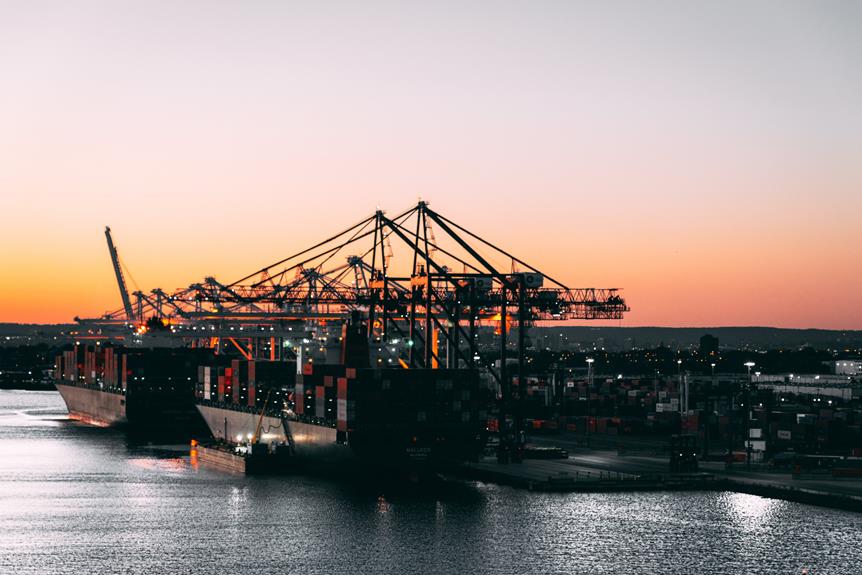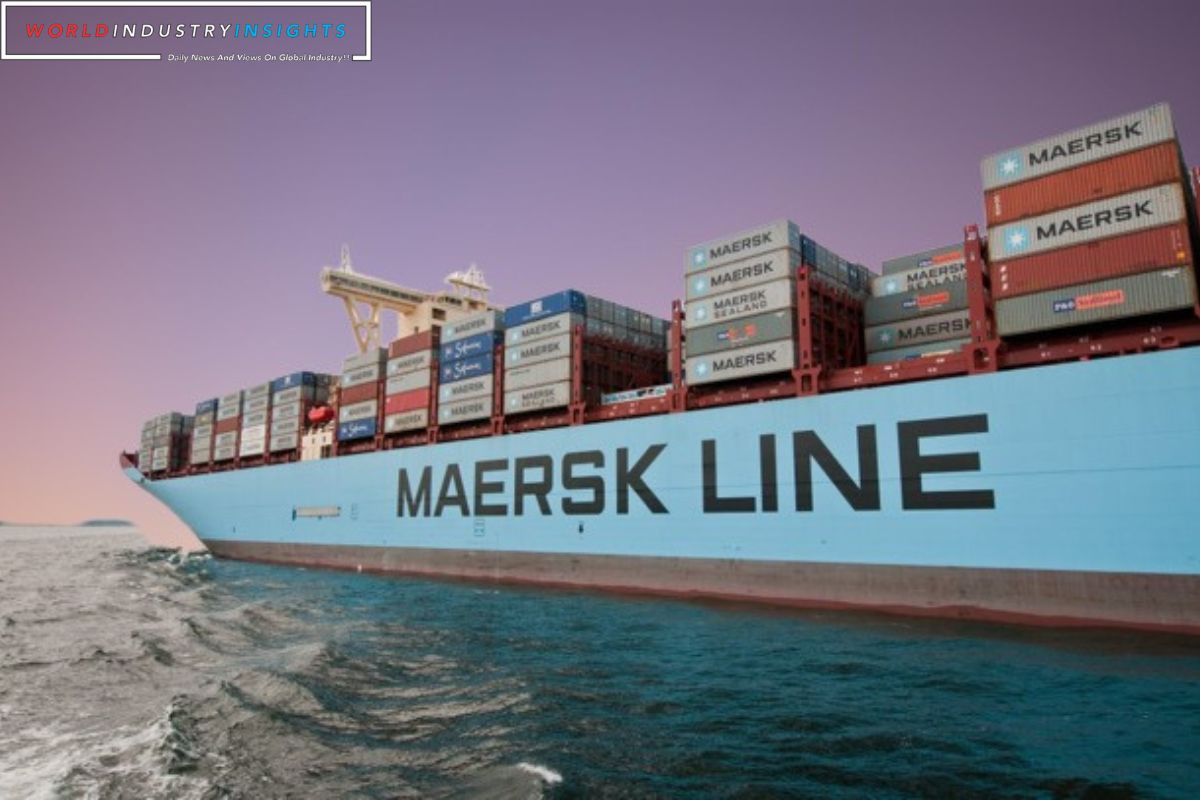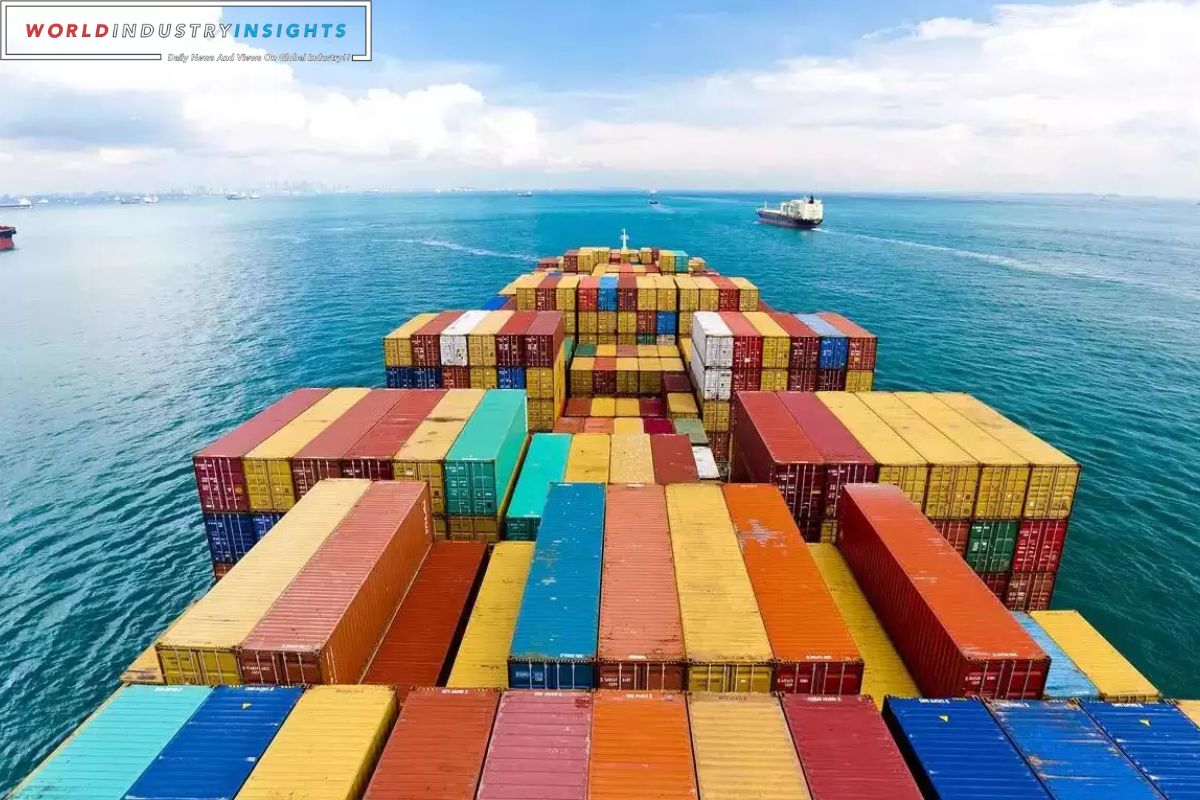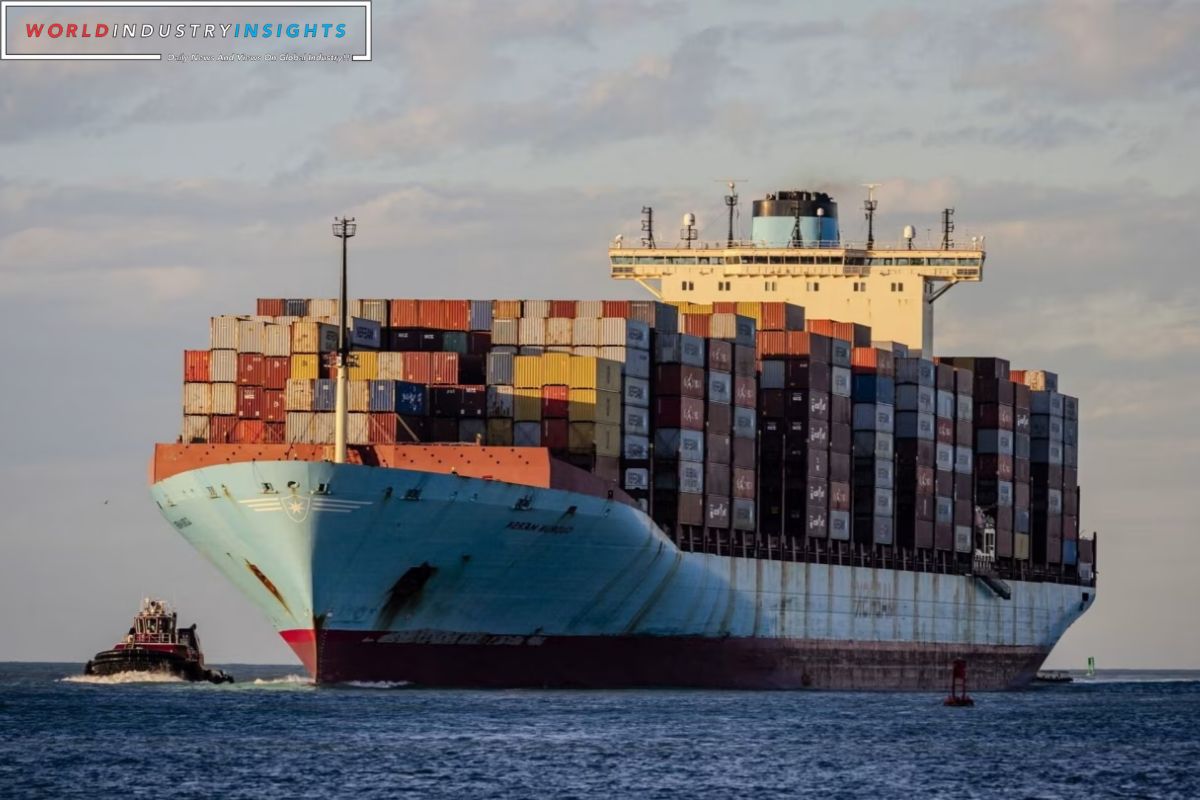Maersk Adjusts Shipping Strategy: Brace yourself for a game-changing decision by the industry giant, Maersk. Get ready to witness a monumental shift in their shipping strategy as they reroute their vessels via the legendary Cape of Good Hope!
Yes, you heard it right Maersk is taking a bold step that will revolutionize the way goods are transported across the globe. In their quest for enhanced safety and efficiency, Maersk has chosen to navigate through this historic route, bypassing the treacherous waters of the Suez Canal.
This strategic move showcases Maersk’s unwavering commitment to ensuring the utmost safety for their crew, vessels, and cargo. Stay tuned to learn more about the future vessel assessments, additional contingency measures, and the impact of this groundbreaking decision.
Exciting times lie ahead for the shipping industry!
Key Takeaways
- Maersk reroutes vessels via the Cape of Good Hope to prioritize safety and avoid potential threats in the Red Sea region.
- Assessments and adjustments of the rerouting decision are conducted on a case-by-case basis, considering factors such as vessel size, cargo type, and destination.
- Utilizing the Cape of Good Hope as an alternative route enhances security, safeguards cargo from piracy, and reduces the need for additional security measures.
- Maersk implements additional contingency measures to enhance security during the voyage, including enhanced surveillance, stricter access control, and advanced communication systems.
Also Read: Maersk Charts a Bold Course: $500M Investment to Revolutionize Supply Chain in South-East Asia
Maersk’s Safety-Driven Re-routing Decision
You should reroute your vessels via the Cape of Good Hope due to Maersk’s safety-driven decision.
With the highly escalated security situation in the Red Sea region, Maersk has made the wise choice to prioritize the safety of its crew, vessels, and customers’ cargo onboard.
By rerouting through the Cape of Good Hope, Maersk is ensuring that its operations aren’t compromised by potential threats in the area. This decision showcases Maersk’s commitment to maintaining the highest standards of safety and security in the shipping industry.
While the rerouting may result in increased transit times and costs, it’s a small price to pay for the peace of mind that comes with knowing that your vessels are out of harm’s way.
Trust Maersk’s expertise and follow their lead in prioritizing safety above all else.
Future Vessel Assessments and Adjustments
Future vessel assessments and adjustments will be conducted on a case-by-case basis to determine necessary rerouting measures. This approach ensures that each vessel’s unique characteristics and circumstances are taken into account, allowing for tailored solutions that prioritize safety and security.
By carefully evaluating factors such as the vessel’s size, cargo type, and destination, Maersk can make informed decisions regarding rerouting options. This flexibility is crucial in today’s ever-changing global landscape, where unforeseen challenges can arise at any moment. It demonstrates Maersk’s commitment to adaptability and proactive risk management.
Through these assessments, Maersk aims to minimize disruptions to supply chains while prioritizing the well-being of all involved. By staying vigilant and responsive, Maersk continues to set the standard for excellence in the shipping industry.
Utilizing Cape of Good Hope as Alternative Route
To ensure the safety of your shipments, Maersk has chosen to utilize the Cape of Good Hope as an alternative route, avoiding the security risks posed by the Red Sea region and the Gulf of Aden. This strategic decision reflects Maersk’s commitment to prioritizing the security and timely delivery of your goods.
Here are four reasons why utilizing the Cape of Good Hope as an alternative route is advantageous:
- Enhanced Security: By rerouting vessels away from the Red Sea region and the Gulf of Aden, Maersk minimizes the risk of piracy and other security threats, safeguarding your cargo.
- Cost Efficiency: Although the Cape of Good Hope route is longer, it eliminates the need for additional security measures such as armed guards, ultimately reducing costs associated with protecting your shipments.
- Reliability: The Cape of Good Hope is a well-established shipping route with a proven track record of reliability. Choosing this alternative route ensures that your goods will be delivered on time and without disruptions.
- Flexibility: Utilizing the Cape of Good Hope allows Maersk to adapt to the ever-changing security landscape, ensuring the continuity of your supply chain even in challenging times.
Implementation of Additional Contingency Measures
To enhance security during the voyage, Maersk will implement additional contingency measures. These measures are a proactive approach to address any potential risks or challenges that may arise during the rerouting of vessels via the Cape of Good Hope.
By implementing enhanced security protocols, Maersk aims to ensure the safety of their ships, crew members, and cargo. This includes measures such as increased surveillance, stricter access control, and the use of advanced technology to monitor and detect any suspicious activities.
Additionally, Maersk will strengthen their communication systems to ensure seamless coordination with relevant authorities, enabling prompt response to any potential threats.
These additional contingency measures demonstrate Maersk’s commitment to maintaining the highest level of security and safety standards throughout their shipping operations.
Commitment to Crew, Vessel, and Cargo Safety
Ensure the safety and well-being of your crew, vessel, and cargo by implementing rigorous security measures. Maersk’s commitment to crew, vessel, and cargo safety is evident in their decision to reroute vessels and conduct case-by-case assessments.
By taking proactive steps to protect their vessels from potential risks and threats, Maersk is demonstrating their dedication to maintaining smooth operations. Furthermore, safeguarding customers’ cargo onboard is a top priority for Maersk, as it’s essential to fulfill their commitment to their clients.
To achieve this, Maersk employs a comprehensive approach to security, which includes the implementation of advanced technology, regular training for crew members, and close monitoring of potential security risks. This steadfast commitment to safety ensures that both crew and cargo are protected throughout the shipping process.
Conclusion Of Maersk Adjusts Shipping Strategy
In conclusion, Maersk’s decision to reroute their vessels via the Cape of Good Hope demonstrates a strong commitment to safety. By avoiding the turbulent Suez Canal, they’re taking proactive measures to protect their crew, vessels, and cargo.
This strategic adjustment not only ensures the smooth operation of their shipping services but also showcases their ability to adapt and make informed decisions in the face of challenges.
Maersk’s dedication to safety sets a commendable example for the industry.
Our Reader’s Queries
What is the strategy of Maersk?
Maersk is currently undergoing a significant transformation, shifting from a conglomerate to an end-to-end logistics provider, and from a fossil fuel follower to a green industry leader. Additionally, the company is transitioning from a technological conservative to a digital frontrunner. As part of this evolution, Maersk launched its ESG strategy in early 2022.
What are the biggest challenges facing Maersk?
Maersk’s CEO, Vincent Clerc, recognizes the obstacles that the industry is currently facing and is determined to simplify operations. He acknowledges that the industry is experiencing a “new normal” with reduced demand, prices returning to historical levels, and rising costs. Despite these challenges, Clerc emphasizes the company’s dedication to overcoming these obstacles and continuing to provide top-notch services.
Who is Maersk biggest competitor?
Maersk Line AS faces stiff competition from industry giants such as CMA CGM SA, headquartered in France with a workforce of 155,000 and a revenue of $74.5B. Hapag-Lloyd AG, based in Germany, boasts a workforce of 16,068 and a revenue of $36.3B. Mitsui OSK Lines Ltd, headquartered in Japan, has a workforce of 8,748 and a revenue of $11.9B. DFDS A/S, based in Denmark, has a workforce of 13,035 and a revenue of $3.8B.
What is managed by Maersk?
Maersk is a versatile company that engages in a range of business activities, including shipping, port operation, supply chain management, and warehousing. With a focus on efficiency and reliability, Maersk is committed to providing top-notch services to its clients across various industries. Whether it’s transporting goods across the ocean, managing complex supply chains, or storing products in secure warehouses, Maersk has the expertise and resources to get the job done right. With a reputation for excellence and a commitment to innovation, Maersk is a leader in the global business community.




